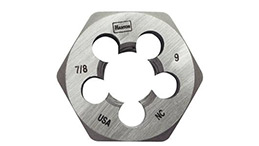
Dec . 07, 2024 09:13
Back to list
Pressure Reduction Mechanisms for Enhanced System Efficiency and Safety
Understanding Pressure Reducing Valves (مخفض الضغط)
Introduction
Pressure reducing valves (PRVs), or مخفض الضغط in Arabic, are crucial components in various systems across multiple industries that deal with fluids
. These devices are designed to lower and regulate the pressure of fluid systems, ensuring safe and effective operation. Especially in applications such as water supply, heating systems, and industrial processes, maintaining the right pressure is vital for functionality and safety. This article delves into the workings, applications, and benefits of pressure reducing valves.What is a Pressure Reducing Valve?
A pressure reducing valve is a type of valve that automatically cuts down a higher inlet pressure to a lower outlet pressure without the need for external control signals. It functions using a spring-loaded mechanism that adjusts to changes in the downstream pressure, allowing for a constant and regulated flow. When the inlet pressure exceeds the set limit, the valve opens to reduce the pressure to predefined levels, and when it falls below the limit, the valve closes to maintain that pressure.
How Do Pressure Reducing Valves Work?
The operation of a pressure reducing valve is relatively straightforward. The valve has two pressure ports one connected to the supply or inlet side, where the higher pressure exists, and the second connected to the outlet side, from which the reduced pressure is delivered. Internally, the valve features a diaphragm that balances the pressure differences. When the outlet pressure surpasses the target setting, the diaphragm moves to open the valve, allowing excess fluid to bypass and flow back to the inlet. Conversely, if the outlet pressure decreases, the diaphragm seals the valve, maintaining a consistent output.
Applications of Pressure Reducing Valves
1. Water Supply Systems One of the most common applications for pressure reducing valves is in municipal water systems. These valves ensure that home and commercial users receive water at a safe, manageable pressure, thus preventing pipe damage, leaks, and excessive wear on plumbing fixtures.
2. Heating Systems In heating systems, such as hydronic heating, PRVs are essential to maintain optimal operating pressure. By regulating the pressure within the system, these valves ensure efficient operation and prevent potential boiler damage caused by excess pressure.
مخفض الضغط

3. Industrial Processes Various manufacturing industries utilize pressure reducing valves to control the pressure of gases and liquids during various processes. By maintaining a precise pressure control, these valves enhance product quality and ensure worker safety.
4. Irrigation Systems In agriculture, PRVs play a vital role in irrigation systems. These valves regulate water pressure, allowing for an even and efficient distribution of water to crops, which is essential for optimal growth and resource management.
Benefits of Using Pressure Reducing Valves
The integration of pressure reducing valves into fluid systems offers several significant benefits
1. Safety By controlling and limiting pressure, PRVs reduce the risk of explosive failures and leakages, protecting both equipment and personnel.
2. Efficiency Maintaining consistent pressure allows systems to operate more efficiently, resulting in lower operational costs, reduced energy consumption, and longer equipment life.
3. Cost Savings By preventing damage to pipework and fittings due to excess pressure, these valves reduce maintenance costs and extend the lifespan of plumbing and industrial systems.
4. Water Conservation In irrigation and water supply systems, using pressure reducing valves can lead to more efficient water usage, contributing to conservation efforts and sustainable practices.
Conclusion
Pressure reducing valves, or مخفض الضغط, play an indispensable role in managing fluid pressure across various applications. Their ability to maintain safe and consistent pressure ensures efficient system operation and promotes safety in both residential and industrial settings. As industries continue to evolve and prioritize safety and efficiency, the importance of pressure reducing valves will undoubtedly remain significant. By understanding their functionality and applications, we can better appreciate these unsung heroes of fluid management.
Next:
Latest news
-
Safety Valve Spring-Loaded Design Overpressure ProtectionNewsJul.25,2025
-
Precision Voltage Regulator AC5 Accuracy Grade PerformanceNewsJul.25,2025
-
Natural Gas Pressure Regulating Skid Industrial Pipeline ApplicationsNewsJul.25,2025
-
Natural Gas Filter Stainless Steel Mesh Element DesignNewsJul.25,2025
-
Gas Pressure Regulator Valve Direct-Acting Spring-Loaded DesignNewsJul.25,2025
-
Decompression Equipment Multi-Stage Heat Exchange System DesignNewsJul.25,2025

